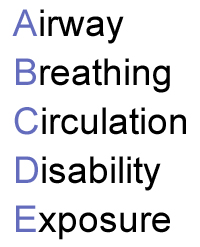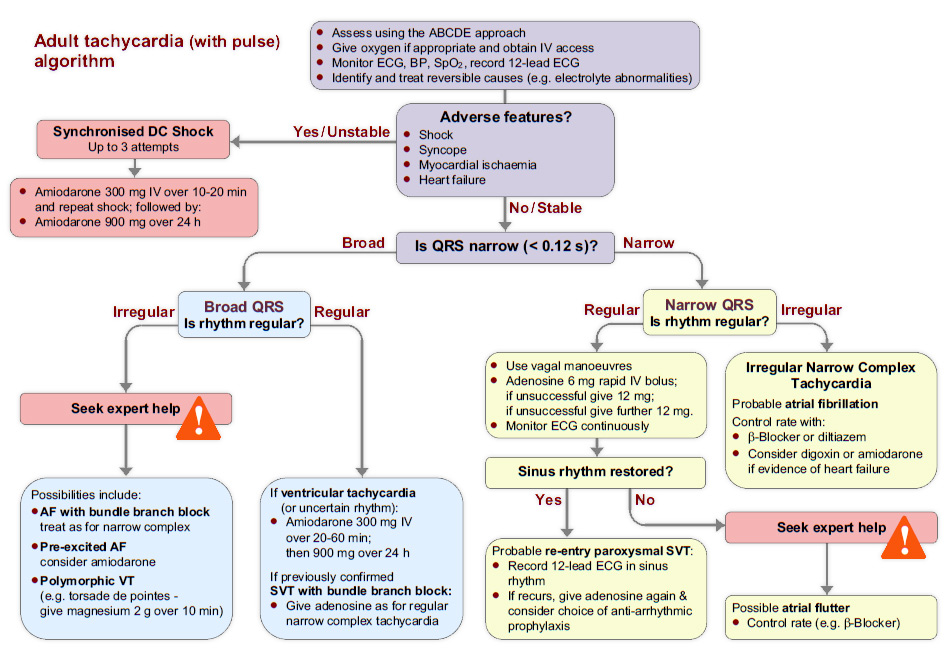
Atrial Fibrillation
Choose one or more answers and then select Confirm.

No, that is not quite right.
No, that is not quite right. The first and fourth options are correct.
In a patient with tachycardia due to AF and no adverse features the recommended first-line treatment is rate control using beta blockade. In a pulseless patient with AF this is PEA and requires immediate CPR.
Amiodarone would be used if a patient with adverse features had had an unsuccessful attempt at cardioversion. Cardiac pacing is used to treat bradycardia, not tachycardia. Conversely synchronised cardioversion is used as first-line treatment for tachyarrhythmia in patients with adverse features. AF with a heart rate of 35 min-1 is a bradycardia and treatment of this is discussed in the bradycardia module.
No, that is not right.
No, that is not right. The first and fourth options are correct.
In a patient with tachycardia due to AF and no adverse features the recommended first-line treatment is rate control using beta blockade. In a pulseless patient with AF this is PEA and requires immediate CPR.
Amiodarone would be used if a patient with adverse features had had an unsuccessful attempt at cardioversion. Cardiac pacing is used to treat bradycardia, not tachycardia. Conversely synchronised cardioversion is used as first-line treatment for tachyarrhythmia in patients with adverse features. AF with a heart rate of 35 min-1 is a bradycardia and treatment of this is discussed in the bradycardia module.
Yes, that is right. The first and fourth options are correct.
In a patient with tachycardia due to AF and no adverse features the recommended first-line treatment is rate control using beta blockade. In a pulseless patient with AF this is PEA and requires immediate CPR.
Amiodarone would be used if a patient with adverse features had had an unsuccessful attempt at cardioversion. Cardiac pacing is used to treat bradycardia, not tachycardia. Conversely synchronised cardioversion is used as first-line treatment for tachyarrhythmia in patients with adverse features. AF with a heart rate of 35 min-1 is a bradycardia and treatment of this is discussed in the bradycardia module.
References
See chapter 8 of the ALS manual for further explanation and examples of how to analyse cardiac rhythm from the ECG.
See chapter 11 of the ALS manual for further reading about the tachycardia algorithm.
The 6-stage approach and the ABCDE approach
1. Is there any electrical activity?
2. What is the ventricular (QRS) rate?
3. Is the QRS rhythm regular or irregular?
4. Is the QRS width normal (narrow) or broad?
Any cardiac rhythm can be described accurately and managed safely and effectively using the first four stages.
5. Is atrial activity present? (If so, what is it: Typical sinus P waves? Atrial fibrillation? Atrial flutter? Abnormal P waves?)
6. How is atrial activity related to ventricular activity? (e.g 1:1 conduction, 2:1 conduction, etc, or no relationship)







